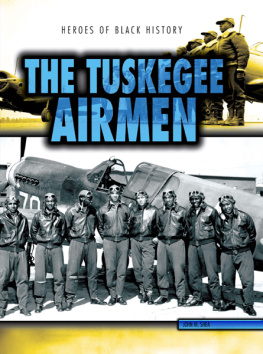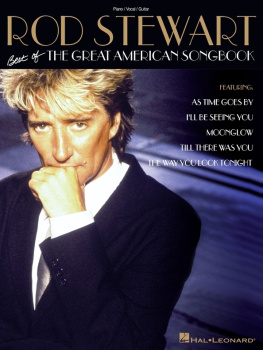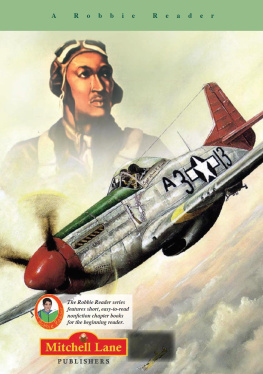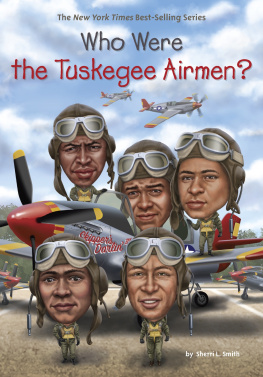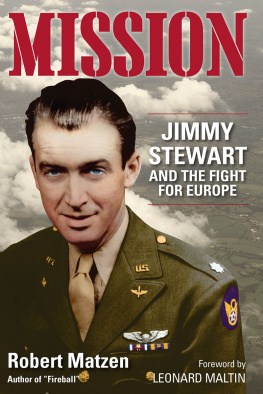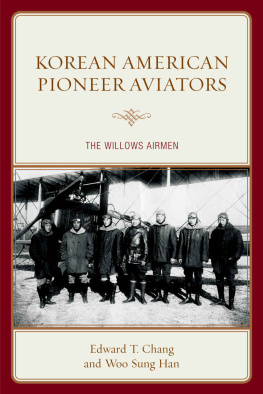Praise for
SOARING TO GLORY
All Americans owe Harry Stewart Jr. and his fellow airmen a huge debt for defending our country during World War II. In addition, they have inspired generations of African American youth to follow their dreams.
HENRY LOUIS GATES JR. , Alphonse Fletcher University Professor, Harvard University
In Soaring to Glory , my friend Harry Stewarts extraordinary life is beautifully told by another friend, Philip Handleman. The struggles of the Tuskegee Airmen and our success against enormous odds makes for inspiring reading. I strongly recommend this book for anyone who wants to know more about the pioneering flyers who broke barriers and changed the world!
LIEUTENANT COLONEL ALEXANDER JEFFERSON , USAF (ret.), cofounder, Tuskegee Airmen Inc.
It is marvelous when a fascinating, well-written book turns out to be socially important as well. Soaring to Glory is exactly that, and arrives at a time when its message is badly needed by the nation. This is a book that can be recommended for a wide variety of reasons, the most important of which is the standard it sets for aviation literature.
WALTER J. BOYNE , former director, Smithsonian Institutions National Air and Space Museum and best-selling author
Starting in the early 1940s, Tuskegee Institute was at the forefront of helping prepare young African-American pilots to fight for freedom in the skies. Harry Stewart is one of those aspiring aviators who came to our campus as a first step in earning their wings, and then went on to become proudly identified as a Tuskegee Airman. His story of serving our country and overcoming obstaclesnot to mention the legacy the Tuskegee Airmen leave us withis an inspiration for us all.
LILY D. MCNAIR , president, Tuskegee University
This book is a masterpiece. It captures the essence of the Tuskegee Airmens experience from the perspective of one who lived it. The action sequences make me feel Im back in the cockpit of my P-51C Kitten! If you want to know what it was like fighting German interceptors in European skies while winning equal opportunity at home, be sure to read this book!
COLONEL CHARLES E. MCGEE , USAF (ret.), former president, Tuskegee Airmen Inc.
Copyright 2019 by Philip Handleman
All rights reserved. No part of this publication may be reproduced or transmitted in any form or by any means electronic or mechanical, including photocopy, recording, or any information storage and retrieval system now known or to be invented, without permission in writing from the publisher, except by a reviewer who wishes to quote brief passages in connection with a review written for inclusion in a magazine, newspaper, website, or broadcast.
Regnery History is a trademark of Salem Communications Holding Corporation
Regnery is a registered trademark of Salem Communications Holding Corporation
Cataloging-in-Publication data on file with the Library of Congress
ISBN 978-1-62157-951-9
ebook ISBN 978-1-62157-952-6
Cover design by John Caruso
Published in the United States by
Regnery Publishing
A Division of Salem Media Group
300 New Jersey Ave NW
Washington, DC 20001
www.Regnery.com
Books are available in quantity for promotional or premium use. For information on discounts and terms, please visit our website: www.Regnery.com.
To Delphine and Marythe loves of our livesand to dreamers everywhere who, refusing to be deterred by the inevitable naysayers, look to the boundless sky and reach for the impossible
Prologue
DOGFIGHT
There can be no courage unless you are scared.
Eddie Rickenbacker
H arry Stewart was five thousand feet over the Luftwaffe base at Wels, Germany.
His flights element had been reduced to seven planes when the eighth was disabled by mechanical problems. Still, they would be more than a match for the four German fighters they called out below. Our seven Mustangs cranked over in a mass dive on the enemy aircraft, Harry recalls.
But suddenly the hunters turned into the huntedas the sky filled with at least another dozen fighters bearing Luftwaffe insignia.
The German fighters that the American airmen had spotted first were decoys. The Mustangs had been lured into an ambush. The confrontation was certain to end with some of the planes zooming down from the sky in spectacular crashes. Harry began breathing heavily. Everything was happening so fast now.
Barely out of his teens and never before engaged in a dogfight, Harry was almost overwhelmed by the powerful emotions flashing through his mind. There was the anger at having been suckered into a trap. There was the terror of the high-stakes dueling about to transpire. Then the most primordial urgethe instinct for survivalkicked in. The young pilots feelings of fear and doubt, a sinking feeling in the pit of his stomach, gave way to an unbounded determination, bolstered by his training.
Just days before, Harry had been promoted to first lieutenant, a sign of his superiors confidence in him. But matters of rank were the farthest thing from his mind as he locked eyes on the two enemy planes beneath him. He advanced toward his prospective quarry as individual skirmishes broke out among the other combatants. As Harry bore down on the tails of the planes in front of him, he saw that they were the long-nosed Focke-Wulf Fw 190D-9s, the finest piston-powered fighters in the Luftwaffes arsenal!
Indeed, an earlier version of the Fw 190, nicknamed the butcher-bird, was described in intelligence reports to Allied pilots as one of Germanys best fighters.... U.S. military authorities had given the pilots only an incomplete description of this new, technologically superior versionthough their intelligence manual did include a surprisingly accurate artists rendering. The brass were clearly concerned about this stunner of German engineering.
The baseline design had been conceived in 1937 by Focke-Wulfs brilliant Kurt Tank as a follow-on to the then world-beating Messerschmitt Bf 109. Tanks original concept incorporated the 1,550-horsepower BMW 139 twin-row radial air-cooled engine, in a departure from the conventional wisdom that favored the newly developed 1,050-horsepower liquid-cooled DB 601A. While the Fw 190 A through C series and the F series had the same general configuration, the D series was a response to the perceived need for a high-altitude fighter.
The D series design returned to the idea of a liquid-cooled engine. Focke-Wulf selected the 1,776-horsepower Junkers Jumo 213A-1 12-cylinder inverted-V inline engine. The engine was combined with a MW 50 methanol-water injection boost system capable of upping the horsepower rating to 2,250 at sea level for short durations. The Jumos size necessitated the elongated nose as well as a lengthened aft fuselage with increased tail surface area to enhance stability. The resulting airframe became an instant classic, one of the most attractively proportioned and aesthetically agreeable to ever roll out of a factory and grace the sky.
And Harrys element was now facing the ultimate iteration, the D-9 model, known as the Dora-Nine. By all accounts, it was a match for the Americans Mustangs.
The armament of the German plane was impressive not only for its firepower but for its ingenious placement. Two MG 131 13-mm machine guns were housed in the upper nose, directly in line with the pilot. Additionally, a pair of MG 151 20-mm cannon were installed in the wing roots, one per side. In the hands of a capable pilot, the Dora-Nine could be incredibly lethal against even the most advanced Allied fighters.
The Mustangs speed brought Harry within firing range. He concentrated on the closer of the two German aircraft, then squeezed off a few short bursts from his fighters six wing-mounted .50-caliber machine guns.
Next page

